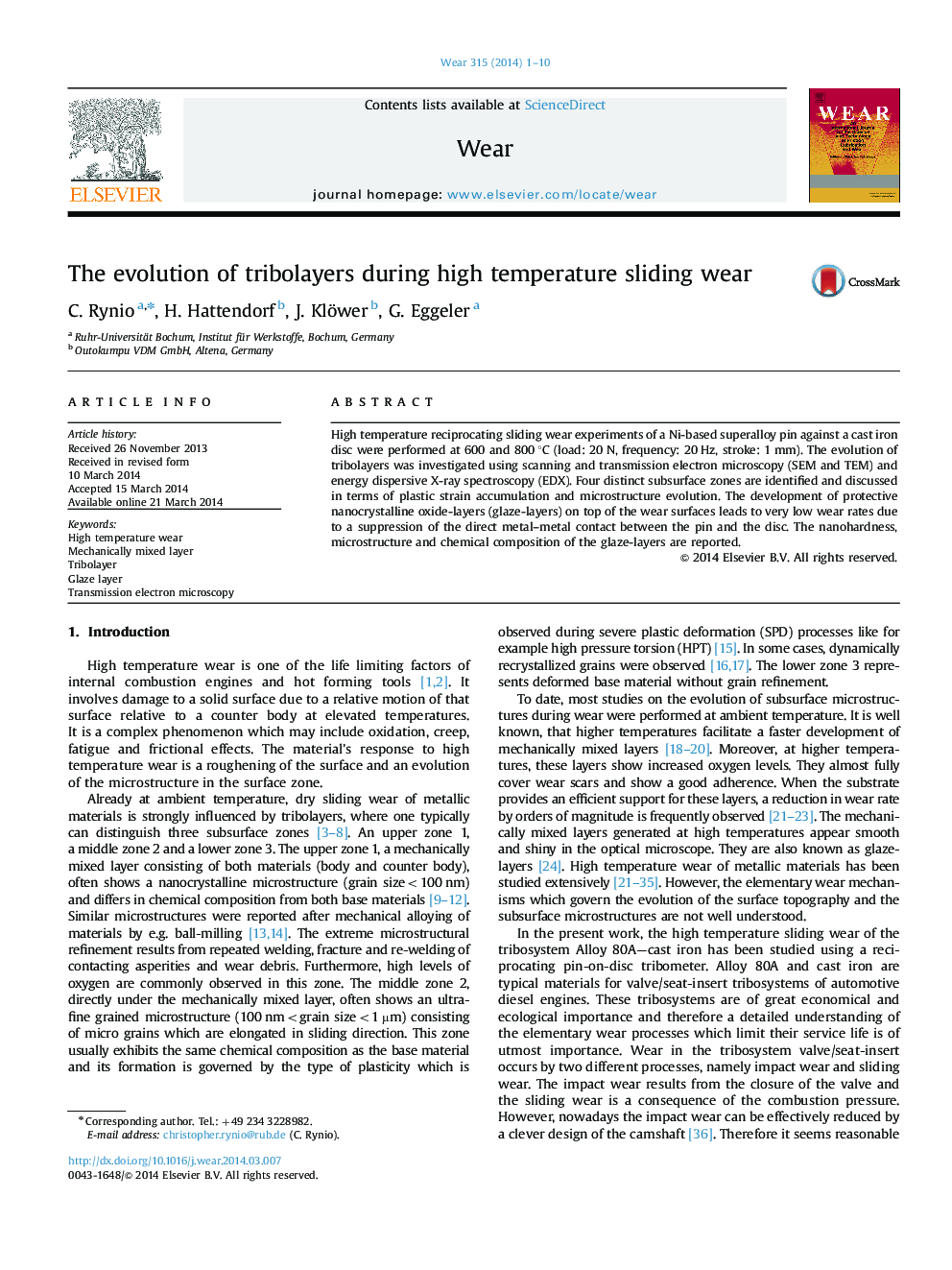| Article ID | Journal | Published Year | Pages | File Type |
|---|---|---|---|---|
| 617404 | Wear | 2014 | 10 Pages |
•High temperature wear of materials for valves and seat inserts is investigated.•TEM investigations show the evolution of 4 distinct surface zones.•The outer zone corresponds to a compacted oxide layer (glaze-layer).•The glaze-layer shows a three times higher hardness as the Alloy 80A pin.•We present detailed schematic illustrations of subsurface microstructure evolution.
High temperature reciprocating sliding wear experiments of a Ni-based superalloy pin against a cast iron disc were performed at 600 and 800 °C (load: 20 N, frequency: 20 Hz, stroke: 1 mm). The evolution of tribolayers was investigated using scanning and transmission electron microscopy (SEM and TEM) and energy dispersive X-ray spectroscopy (EDX). Four distinct subsurface zones are identified and discussed in terms of plastic strain accumulation and microstructure evolution. The development of protective nanocrystalline oxide-layers (glaze-layers) on top of the wear surfaces leads to very low wear rates due to a suppression of the direct metal–metal contact between the pin and the disc. The nanohardness, microstructure and chemical composition of the glaze-layers are reported.
